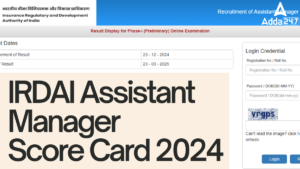Dear Readers,
History and Generations is an important chapter of Computer Awareness for Bank Exams. Computer awareness is a section in upcoming NICL AO Mains and it is also a section in the mains examination of IBPS RRB, IBPS PO and IBPS Clerk exams. Last year many questions in IBPS Examination were from this topic History and Generations, so aspirants must also prepare this along with other topics. You can find more study notes on computer terms asked in recent bank exams and start your preparation.
1. In 1822, Charles Babbage conceptualized and began developing the Difference Engine, considered to be the first automatic computing machine.
2. Then after almost a decade, Charles Babbage proposed the first general mechanical computer, the Analytical Engine. The Analytical Engine contained an Arithmetic Logic Unit (ALU), basic flow control, and integrated memory concept and is the first general-purpose computer.
3. In 1946, ENIAC- Electronic Numerical Integrator and Computer was the first electronic general-purpose computer. It was the first large-scale computer to run at electronic speed without being slowed by any mechanical parts. And it was invented by J.Presper Eckert and John W. Mauchly.
4. Douglas Engelbart invented the first computer mouse.
5. First computer with RAM – MIT introduces the Whirlwind machine, a revolutionary computer that was the first digital computer with magnetic core RAM and real-time graphics.
6. The first minicomputer – In 1960 Digital Equipment Corporation released its first of many PDP computers the PDP-1.
7. The first laptop – First Laptop was introduced in 1981 by Adom Osborne and the company “EPSON” manufactured first Laptop.
The following table categorises generations of computers and other important factors associated with the generations.
| Subject | 1st generation |
2nd generation |
3rd generation |
4th generation |
5th generation |
|---|---|---|---|---|---|
| Period | 1940-1956 | 1956-1963 | 1964-1971 | 1971-present | present & beyond |
| Circuitry | Vacuum tube | Transistor | Integrated chips (IC) | Microprocessor (VLSI) | ULSI (Ultra Large Scale Integration) technology |
| Memory Capacity |
20 KB | 128KB | 1MB | Magnetic core memory, LSI and VLSI. High Capacity | ULSI |
| Processing Speed |
300 IPS instructions Per sec. | 300 IPS | 1MIPS (1 million inst. Per sec.) | Faster than 3rd generation | Very fast |
| Programming Language |
Machine, Language |
Assembly language & early high-level languages(FORTRAN, COBOL, ALGOL) |
C,C++ | Higher level languages,C,C++,Java | All the Higher level languages,,Neural networks, |
| Example of computers |
UNIVAC, EDVAC | IBM 1401, IBM 7094, CDC 3600,D UNIVAC 1108 |
IBM 360 series, 1900 series | Pentium series,Multimedia, | Artificial Intelligence, Robotics |
You may also like to read:


.png)


 The Hindu Review October 2022: Download ...
The Hindu Review October 2022: Download ...
 SSC Calendar 2025-26 Out, Check SSC CGL,...
SSC Calendar 2025-26 Out, Check SSC CGL,...
 IRDAI Assistant Manager Score Card 2024 ...
IRDAI Assistant Manager Score Card 2024 ...




